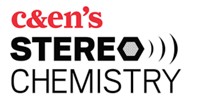Advertisement
Grab your lab coat. Let's get started
Welcome!
Welcome!
Create an account below to get 6 C&EN articles per month, receive newsletters and more - all free.
It seems this is your first time logging in online. Please enter the following information to continue.
As an ACS member you automatically get access to this site. All we need is few more details to create your reading experience.
Not you? Sign in with a different account.
Not you? Sign in with a different account.
ERROR 1
ERROR 1
ERROR 2
ERROR 2
ERROR 2
ERROR 2
ERROR 2
Password and Confirm password must match.
If you have an ACS member number, please enter it here so we can link this account to your membership. (optional)
ERROR 2
ACS values your privacy. By submitting your information, you are gaining access to C&EN and subscribing to our weekly newsletter. We use the information you provide to make your reading experience better, and we will never sell your data to third party members.
Computational Chemistry
Chemistry In Pictures
C&EN’s Chemistry in Pictures goes meta
Our collection of chemistry photos will help train an algorithm to recognize lab materials, vessels, and processes
by Craig Bettenhausen
March 9, 2020

At C&EN, we’re used to reporting about science. But every now and then we get to be a part of the research. We’re excited to announce our participation in a machine learning project led by Alán Aspuru-Guzik, a chemistry professor at the University of Toronto, and postdoc Sagi Eppel.
Aspuru-Guzik and Eppel want to build an autonomous lab system that can perform the full range of operations used for chemical synthesis, they say in a recently posted preprint (ChemRxiv 2020, DOI: 10.26434/chemrxiv.11930004.v1).
To do that, they need to develop a computer vision system that can recognize glassware; phase boundaries such as those between liquids, gases, and foams; powders; and other laboratory objects. “Experimental chemistry consists largely of the handling of materials in vessels,” they said in the paper.
Robotics makers agree. Dissolving a solid into a liquid in an Erlenmeyer flask is just one example of a place where vision is a crucial part of problem-solving, says Jim Shimano, a program manager at lab robotics firm Precise Automation. “It’s probably not just the hand motion, it’s the person who can look and see that a lump over there isn’t mixing.” Improved computer vision systems could help robots replicate this feat.
To train such a system, Eppel needs a large data set of images from chemistry labs. “We are trying to recognize materials, vessels, and processes in a lab setting,” Eppel tells C&EN. And that’s where C&EN’s Chemistry in Pictures comes in.
Launched in 2014, C&EN’s Chemistry in Pictures showcases and celebrates the beauty of chemistry. We share captivating chemistry-related images, along with captions describing the science behind them, twice a week at cen.chempics.org as well as on C&EN’s social media accounts. We’ve even held #IRL exhibitions of Chemistry in Pictures. A little more than half of the images we feature come from reader submissions. We run monthly and yearly contests to recognize the best of those submissions, but it’s always hard to pick the winners because we get some amazing photos, micrographs, and other images.
Some of our posts are otherworldly, some are silly, but many are deeply familiar to anyone who’s spent time in a chemistry or chemical engineering lab. That last category is what Eppel’s Vector-LabPics data set will make use of.
But as proud as we are to be a part of the project, the data set won’t be just Chemistry in Pictures. Aspuru-Guzik and Eppel are asking for submissions from the chemistry community. They are especially interested in photos from your lab that contain glassware. Visit www.cs.toronto.edu/chemselfies/ to participate. And hey, while you’re at it, pop over to cen.chempics.org/submit and send your cool chemistry pics our way too.



Join the conversation
Contact the reporter
Submit a Letter to the Editor for publication
Engage with us on Twitter